
In philosophy, empiricism is an epistemological view that holds that true knowledge or justification comes only or primarily from sensory experience. It is one of several competing views within epistemology, along with rationalism and skepticism. Empiricism emphasizes the central role of empirical evidence in the formation of ideas, rather than innate ideas or traditions. However, empiricists may argue that traditions arise due to relations of previous sensory experiences.
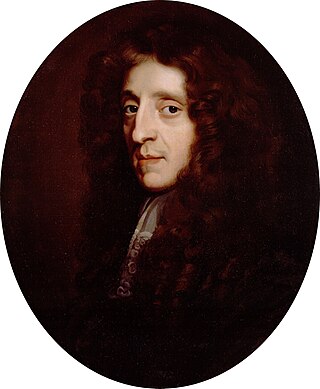
John Locke was an English philosopher and physician, widely regarded as one of the most influential of Enlightenment thinkers and commonly known as the "father of liberalism". Considered one of the first of the British empiricists, following the tradition of Francis Bacon, Locke is equally important to social contract theory. His work greatly affected the development of epistemology and political philosophy. His writings influenced Voltaire and Jean-Jacques Rousseau, and many Scottish Enlightenment thinkers, as well as the American Revolutionaries. His contributions to classical republicanism and liberal theory are reflected in the United States Declaration of Independence. Internationally, Locke's political-legal principles continue to have a profound influence on the theory and practice of limited representative government and the protection of basic rights and freedoms under the rule of law.
Substance theory, or substance–attribute theory, is an ontological theory positing that objects are constituted each by a substance and properties borne by the substance but distinct from it. In this role, a substance can be referred to as a substratum or a thing-in-itself. Substances are particulars that are ontologically independent: they are able to exist all by themselves. Another defining feature often attributed to substances is their ability to undergo changes. Changes involve something existing before, during and after the change. They can be described in terms of a persisting substance gaining or losing properties. Attributes or properties, on the other hand, are entities that can be exemplified by substances. Properties characterize their bearers; they express what their bearer is like.

The Scientific Revolution was a series of events that marked the emergence of modern science during the early modern period, when developments in mathematics, physics, astronomy, biology and chemistry transformed the views of society about nature. The Scientific Revolution took place in Europe in the second half of the Renaissance period, with the 1543 Nicolaus Copernicus publication De revolutionibus orbium coelestium often cited as its beginning.

Pierre Gassendi was a French philosopher, Catholic priest, astronomer, and mathematician. While he held a church position in south-east France, he also spent much time in Paris, where he was a leader of a group of free-thinking intellectuals. He was also an active observational scientist, publishing the first data on the transit of Mercury in 1631. The lunar crater Gassendi is named after him.

In Renaissance alchemy, alkahest was the theorized "universal solvent". It was supposed to be capable of dissolving any other substance, including gold, without altering or destroying its fundamental components.
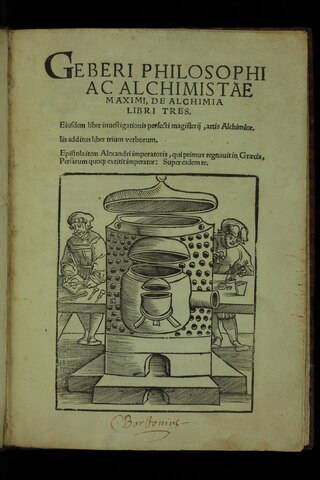
Pseudo-Geber is the presumed author or group of authors responsible for a corpus of pseudepigraphic alchemical writings dating to the late 13th and early 14th centuries. These writings were falsely attributed to Jabir ibn Hayyan, an early alchemist of the Islamic Golden Age.

Early modern philosophy is a period in the history of philosophy that overlaps with the beginning of the period known as modern philosophy.

The World, also called Treatise on the Light, is a book by René Descartes (1596–1650). Written between 1629 and 1633, it contains a nearly complete version of his philosophy, from method, to metaphysics, to physics and biology.

Edward Nouri Zalta is an American philosopher who is a senior research scholar at the Center for the Study of Language and Information at Stanford University. He received his BA at Rice University in 1975 and his PhD from the University of Massachusetts Amherst in 1981, both in philosophy. Zalta has taught courses at Stanford University, Rice University, the University of Salzburg, and the University of Auckland. Zalta is also the Principal Editor of the Stanford Encyclopedia of Philosophy.
In optics, the corpuscular theory of light states that light is made up of small discrete particles called "corpuscles" which travel in a straight line with a finite velocity and possess impetus. This was based on an alternate description of atomism of the time period.
Atomism is a natural philosophy proposing that the physical universe is composed of fundamental indivisible components known as atoms.
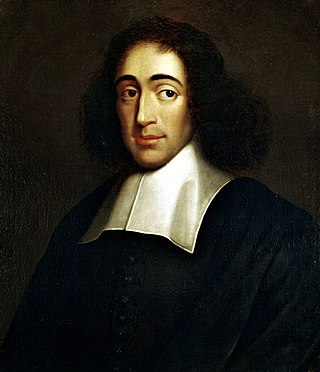
In the philosophy of Baruch Spinoza, conatus is an innate inclination of a thing to continue to exist and enhance itself. This thing may be mind, matter, or a combination of both, and is often associated with God's will in a pantheist view of nature. The conatus may refer to the instinctive will to live of living organisms or to various metaphysical theories of motion and inertia. Today, conatus is rarely used in the technical sense, since classical mechanics uses concepts such as inertia and conservation of momentum that have superseded it. It has, however, been a notable influence on later thinkers such as Arthur Schopenhauer and Friedrich Nietzsche.
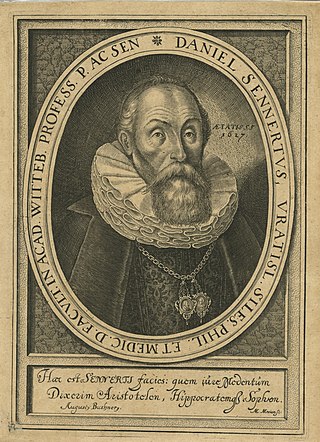
Daniel Sennert was a renowned German physician and a prolific academic writer, especially in the field of alchemy or chemistry. He held the position of professor of medicine at the University of Wittenberg for many years.
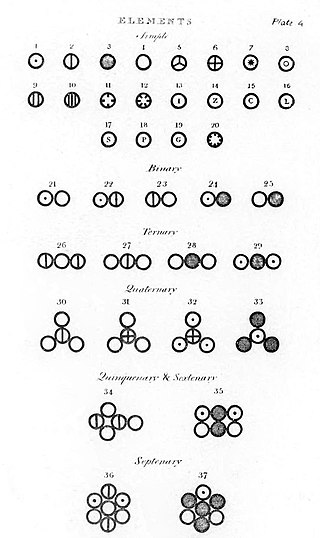
This timeline of chemistry lists important works, discoveries, ideas, inventions, and experiments that significantly changed humanity's understanding of the modern science known as chemistry, defined as the scientific study of the composition of matter and of its interactions.
Margaret J. "Maggie" Osler was a historian and philosopher of early modern science and a professor of history at the University of Calgary.
Quaestiones quaedam philosophicae is the name given to a set of notes that Isaac Newton kept for himself during his earlier years in Cambridge. They concern questions in the natural philosophy of the day that interested him. Apart from the light it throws on the formation of his own agenda for research, the major interest in these notes is the documentation of the unaided development of the scientific method in the mind of Newton, whereby every question is put to experimental test.

William R. Newman is Distinguished Professor and Ruth N. Halls Professor in the Department of History and Philosophy of Science at Indiana University. Most of Newman’s work in the History of Science has been devoted to alchemy and "chymistry," the art-nature debate, and matter theories, particularly atomism. Newman is also General Editor of the Chymistry of Isaac Newton, an online resource combining born-digital editions of Newton’s alchemical writings with multimedia replications of Newton’s alchemical experiments. In addition, he was Director of the Catapult Center for Digital Humanities and Computational Analysis of Texts at Indiana University. Newman is on the editorial boards of Archimedes, Early Science and Medicine, and HOPOS.
Mechanism is the belief that natural wholes are similar to complicated machines or artifacts, composed of parts lacking any intrinsic relationship to each other.
Minima naturalia were theorized by Aristotle as the smallest parts into which a homogeneous natural substance could be divided and still retain its essential character. In this context, "nature" means formal nature. Thus, "natural minimum" may be taken to mean "formal minimum": the minimum amount of matter necessary to instantiate a certain form.












